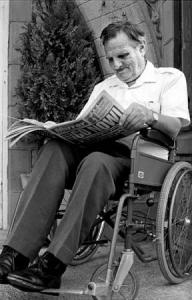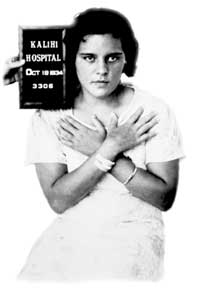 [Image description: Newspaper clipping about the 1893 asylum fire near Dover NH, with the headlines "Cremated./Forty Crazed People Burned to Death./Insane Asylum at the County Farm Burned to Ground./Horrible Scenes Enacted in a Hell of Fire and Smoke./A Calamity Without Parallel Falls upon the County of Stratford." Found here.]
[Image description: Newspaper clipping about the 1893 asylum fire near Dover NH, with the headlines "Cremated./Forty Crazed People Burned to Death./Insane Asylum at the County Farm Burned to Ground./Horrible Scenes Enacted in a Hell of Fire and Smoke./A Calamity Without Parallel Falls upon the County of Stratford." Found here.]In the 1890s, states and counties in the US were locating asylums away from towns. It was justified as a more healthful location, with the opportunity for therapeutic and cost-effective agricultural labor; it was also popular as an "out of sight, out of mind" solution, given the general fear of people with mental illnesses. One consequence of this location choice was that the staff generally lived on the grounds of the asylum; another consequence was that, in the event of a disaster, there was no nearby community to come help.
Thus, the Stratford County (NH) Insane Asylum fire of 1893, on this date, a snowy winter night in New Hampshire. No one knew how it was set, but it began in the room of Mrs. Mary Lafontaine, a Canadian woman with a history of "melancholia." A watchman, Wilbur Chesley, alerted others and escaped along with the keeper William Driscoll, and Driscoll's wife and children. Of the more than forty inmates locked in their rooms in a large wooden building, only three or four survived the fire. (Of the hundred or so paupers in a workhouse on the same campus, all were saved, in part because they were quickly organized into a fire brigade.) The list of the dead in a newspaper report that week includes 26 women, 13 men.*
The New York Times headline appeared on page 5 the next day: "They Laughed at the Fire: Details of the Terrible Catastrophe at Dover. Forty-One Insane Patients, Unable to Save Themselves, Were Burned Alive--The Asylum Was an Old-Fashioned Frame Structure Unfit for their Occupancy." Opined the author of the article:
The fire conveys the sad lesson, patent to all, that the custom of isolating the county workhouse miles away from the town centre is something which cannot be longer tolerated in this enlightened age.An investigation by the state board of health also noted rampant alcoholism and incompetence among the asylum staff, and the practice of furnishing matches to inmates who smoked (as Mrs. Lafontaine did), as further factors in the disastrous fire. The county asylums in New Hampshire were abolished in part because of the board's findings, and replaced with state-run asylums.
*The various new accounts don't have matching counts of the dead.





